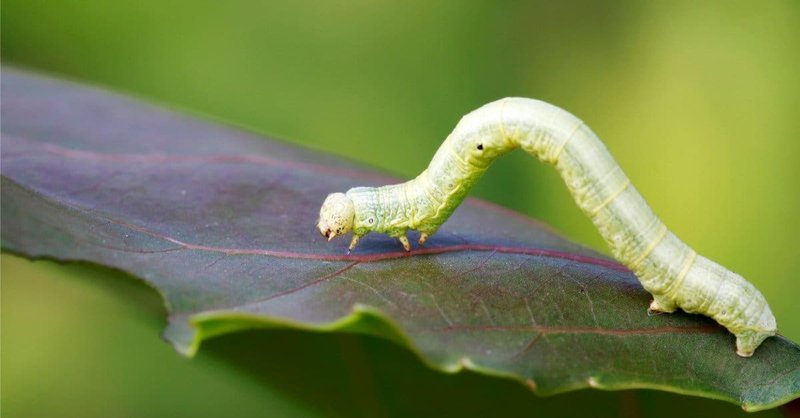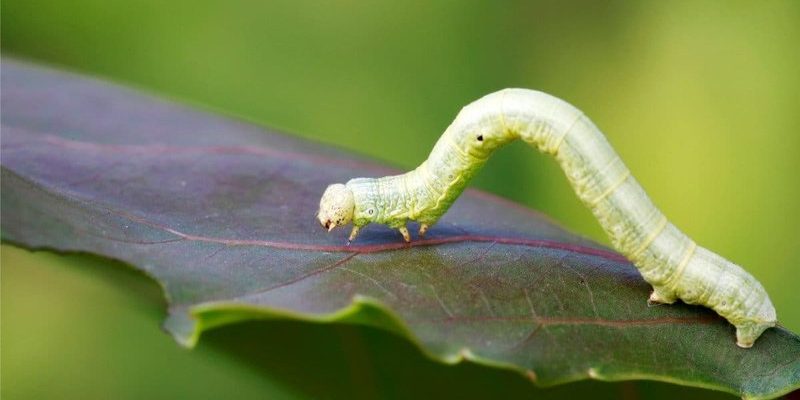
Inchworms, which belong to the Geometridae family, are famous for their unique, inching movement. On the flip side, loopers are a type of caterpillar from several different families but are generally known for their distinctive looping motion. Both are often seen in gardens and can be beneficial to ecosystems, but understanding their differences can enhance your appreciation of nature and help you identify them correctly during your next outdoor adventure. So grab a cup of coffee, and let’s dive into the world of inchworms and loopers!
What Are Inchworms?
Inchworms are the larvae of moths from the Geometridae family. Their name comes from the way they move, which resembles measuring an inch at a time. You might notice them moving by arching their bodies, pulling their hind end forward, then inching ahead. This fascinating locomotion is how they navigate the branches and leaves they inhabit.
One of the key features of inchworms is their long, slender bodies. They can be green, brown, or even have stripes that help them camouflage among leaves and twigs. This stealthy appearance protects them from predators, making them quite clever little creatures. If you’ve ever seen one, you might have noticed how it seems like it’s “walking” with only two sets of feet, which can be a bit quirky to watch!
Here’s a fun fact: inchworms can actually be helpful in your garden, as they feed on the leaves of various plants. However, if their populations grow too large, they can cause some damage. Many gardeners keep an eye on these critters to ensure they don’t overwhelm their plants.
What Are Loopers?
Loopers, while similar to inchworms in appearance, have their own unique traits. The term “looper” refers to the way these caterpillars move, which is by forming a loop with their bodies, hence the name. They are often a bit more robust than inchworms and can be found in various colors, including green, yellow, and brown, often with markings that help them blend in.
Unlike inchworms, which are primarily from the Geometridae family, loopers can belong to different families, including Noctuidae and other moth families. This diversity means that loopers can vary widely in appearance and behavior, making them a bit more unpredictable.
You might also notice that loopers have a more pronounced head than inchworms, giving them a sturdier look. They, too, can cause some damage to your garden but often play a role in the overall ecosystem, acting as food for birds and other predators.
How Do Their Movements Differ?
If you’ve ever watched an inchworm and a looper in action, you might be struck by their different styles of movement. As we’ve mentioned, inchworms inch along by forming a loop with their bodies and pulling their back end forward. This creates a slow, deliberate motion that resembles measuring. It might remind you of a small child trying to figure out how to walk!
Loopers, on the other hand, exhibit a more pronounced looping motion. They pull their bodies into an arch, resembling a letter “C” before extending forward. This kind of movement allows them to quickly navigate their surroundings while feeding on leaves. Honestly, it can look almost like they’re dancing through the foliage!
It’s interesting how these movements serve a purpose beyond just locomotion. Both inchworms and loopers have developed these unique ways of moving to evade predators. By blending into their surroundings and moving in ways that mimic the environment, they make it harder for birds and other animals to spot them.
Identifying Inchworms vs. Loopers
When trying to identify whether you’re looking at an inchworm or a looper, a few key differences can help. First, consider their body shape. Inchworms tend to have a long and slender appearance, while loopers are generally thicker and more rounded.
Another tip is to observe their movement. If you see a caterpillar “inching” along, it’s likely an inchworm. If it’s making loops or arches instead, you’re probably looking at a looper.
Color can also be a helpful clue. While both can be green or brown, loopers often have brighter colors or patterns. Take a moment to observe any distinctive markings; many loopers have stripes or spots that can help in identification.
Lastly, knowing where you find them can be helpful. Inchworms are often associated with specific plants as they tend to be more selective with their diet. Loopers, being a bit more diverse, can be spotted on a wider range of plants.
Feeding Habits and Diet
Both inchworms and loopers are herbivores, meaning they primarily feed on leaves. However, their feeding habits can differ. Inchworms usually prefer certain plants, such as those in the family of deciduous trees, including oaks and maples. Their selective feeding helps keep their populations in check, so they don’t overrun a single plant type.
Loopers, on the other hand, can be a bit more adventurous when it comes to their diet. They’re known to chow down on a variety of plants, including vegetables, which can sometimes make them a nuisance in gardens. If you’re growing greens or tomatoes, watch out for loopers snacking on your hard work.
Both types of caterpillars can cause damage to plants, especially when they are plentiful. If you notice chewed leaves or holes, it might be time to investigate further. Knowing who the culprit is—whether it’s an inchworm or a looper—can help you decide how best to manage them.
Impact on Gardens and Ecosystems
Inchworms and loopers play vital roles in their ecosystems. They’re a food source for birds, insects, and other animals, contributing to the food chain and promoting biodiversity. Plus, their feeding helps prune plants and trees, which can encourage new growth.
However, when their populations get out of hand, they can become pests. In gardens, a sudden increase in either inchworms or loopers can lead to significant leaf damage. This is especially true for loopers, who can munch through greens in no time.
To balance their impact, it’s essential to monitor their populations. If you notice an uptick, consider using natural predators, like birds, or introducing beneficial insects that feed on them. Remember, while they can be a nuisance, they also serve a purpose in nature!
So, the next time you spot a tiny caterpillar inching along a branch, you can now identify whether it’s an inchworm or a looper with ease. Both have fascinating traits and contribute to the intricate web of life in our gardens and ecosystems. Understanding these differences can deepen your connection with nature and help you appreciate the variety of life that exists in your backyard.
Next time you’re out enjoying nature, take a moment to watch these little creatures. Whether inching, looping, or munching, they each have their unique story to tell. Nature is full of surprises—let’s keep exploring and learning!

